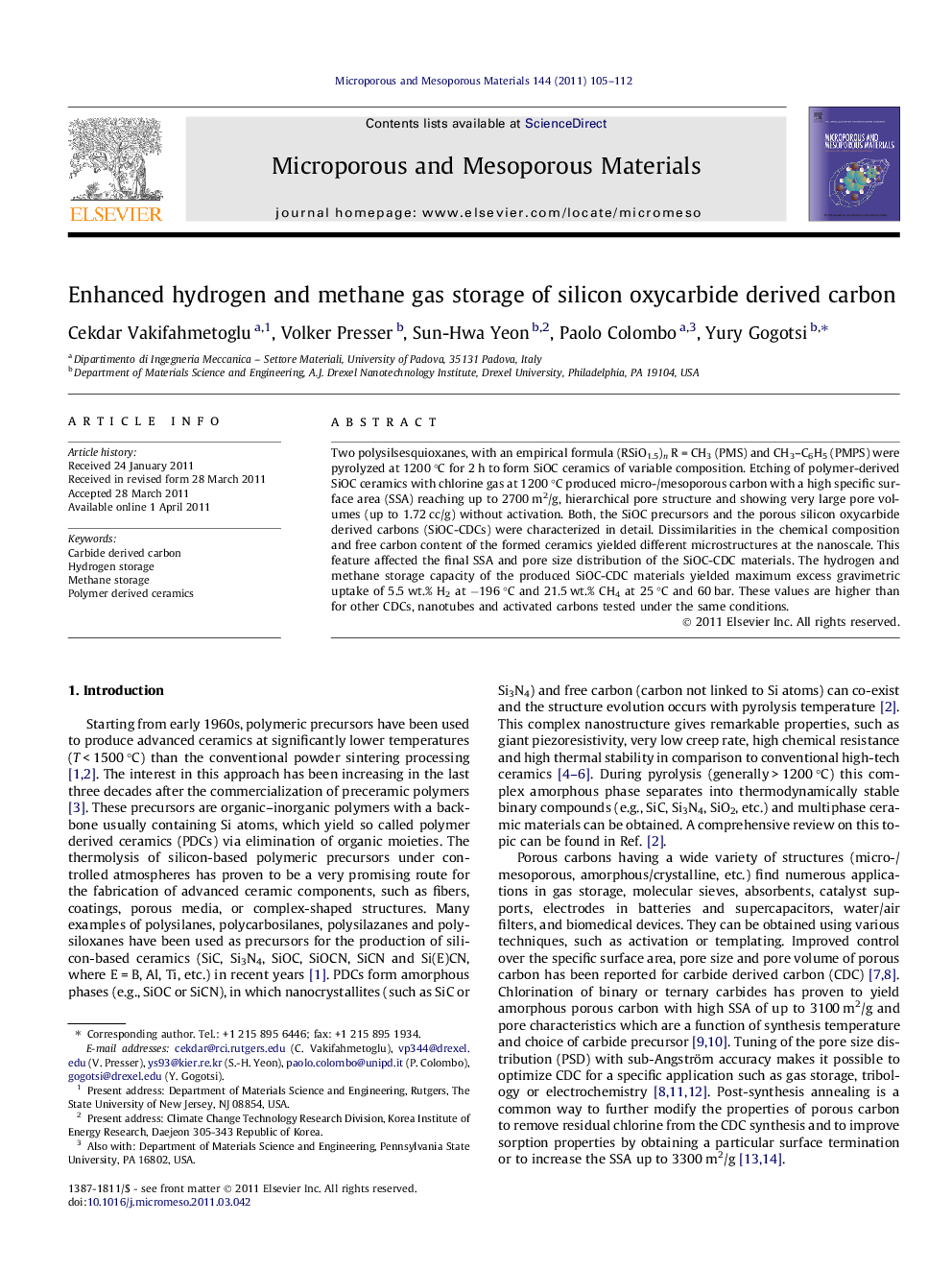| کد مقاله | کد نشریه | سال انتشار | مقاله انگلیسی | نسخه تمام متن |
|---|---|---|---|---|
| 75119 | 49109 | 2011 | 8 صفحه PDF | دانلود رایگان |

Two polysilsesquioxanes, with an empirical formula (RSiO1.5)n R = CH3 (PMS) and CH3–C6H5 (PMPS) were pyrolyzed at 1200 °C for 2 h to form SiOC ceramics of variable composition. Etching of polymer-derived SiOC ceramics with chlorine gas at 1200 °C produced micro-/mesoporous carbon with a high specific surface area (SSA) reaching up to 2700 m2/g, hierarchical pore structure and showing very large pore volumes (up to 1.72 cc/g) without activation. Both, the SiOC precursors and the porous silicon oxycarbide derived carbons (SiOC-CDCs) were characterized in detail. Dissimilarities in the chemical composition and free carbon content of the formed ceramics yielded different microstructures at the nanoscale. This feature affected the final SSA and pore size distribution of the SiOC-CDC materials. The hydrogen and methane storage capacity of the produced SiOC-CDC materials yielded maximum excess gravimetric uptake of 5.5 wt.% H2 at −196 °C and 21.5 wt.% CH4 at 25 °C and 60 bar. These values are higher than for other CDCs, nanotubes and activated carbons tested under the same conditions.
Hierarchically porous (micro/meso) carbide derived carbon (CDC) is produced by high temperature chlorination of polymer derived SiOC ceramics. The hydrogen storage capacity of the formed SiOC-CDC at cryogenic temperatures (5.5 wt.%) was higher than that of other carbonaceous materials making it one of the most promising candidates for hydrogen storage so far. The material has also shown 21.5 wt% methane uptake at 60 bar at room temperature.Figure optionsDownload as PowerPoint slideHighlights
► Amorphous SiOC were produced from polysiloxane resins after pyrolysis at 1200 °C.
► Chlorine etching of SiOC materials resulted in a hierarchically porous carbon.
► The formed carbon had high SSA reaching ∼2700 m2/g and a large pore volume 1.72 cc/g.
► Excess hydrogen uptake value was 5.5 wt.% at 60 bar and −196 °C.
► Excess methane uptake without saturation was found as 21.5 wt.% at 60 bar and 25 °C.
Journal: Microporous and Mesoporous Materials - Volume 144, Issues 1–3, October 2011, Pages 105–112